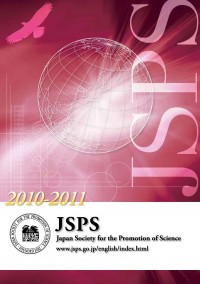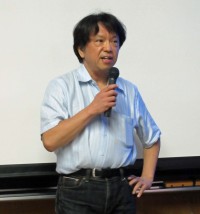The Japan Society for the Promotion of Science (JSPS) has awarded a new five-year award for ILC detector R&D. A kickoff meeting for this grant was held at Tohoku University in Sendai, Japan from 12-14 September. The new programme is descriptively entitled “a global R&D program of a state-of-the-art detector system for ILC.” The research will focus on critical R&D on advanced particle detector techniques central to ILC needs, but that also have much broader implications for science, technology and medicine.
JSPS was founded in 1932 as a non-profit foundation through an endowment by Emperor Showa. It became a quasi-government organisation in 1967 under the Ministry of Education, Science, Sports and Culture (Monbusho) and now under the Ministry of Education, Culture, Sports, Science and Technology (MEXT). JSPS promotes Japanese science by initiating and carrying out a wide range of programmes to advance scientific research, including research grants, researcher cultivation and international exchange and cooperation. JSPS promotes Japanese science as an independent administrative institution supported primarily through subsidies from the Japanese government. Its stated main functions are “to foster young researchers; to promote international scientific cooperation; to award grants-in-aid for scientific research; to support scientific cooperation between the academic community and industry; and to collect and distribute information on scientific research activities.”
ILC detector R&D in Japan has been traditionally supported by grants to individuals without explicit coordination. The JSPS award is for approximately 500 million yen over 5 years (100 yen is roughly equal to $1.30), including funds for indirect costs and salaries. The new JSPS award has an increase of about 40 percent over the past award and is the first successful funding of a bundled proposal. The ILC detector researchers in Japan also have submitted a second independent proposal of similar size and scope to MEXT.
The list of research efforts that will be supported by the JSPS grant includes the central ILC detector technologies: high-speed, low-power and radiation hard vertex detector; end plates for time projection chamber tracking; silicon pad / scintillator hybrid system for calorimetry; physics studies guided by LHC results; and expansion of the grid computing effort to use in data analysis. The workshop at Tohoku University reviewed advanced detector technologies and basically set out the goals for the new programme.
The JSPS kickoff meeting was held exactly six months after the Great East Japan Earthquake, as it is called in Japan. The recovery is truly impressive. Sendai was badly damaged by the tsunami resulting from the earthquake, including flooding of the Sendai airport. The airport is back open and most services are back to normal.
A highlight of the meeting was a visit by workshop participants to one of the two Japanese sites under consideration for the ILC. The Tohoku site is in the Kitakami Mountains not far from Sendai, while the other Japanese site is in the Sefuri Mountains in Kyushu. Both sites have strong support from local industry, universities and government. In addition, Iwate prefecture proposed to make the ILC a pillar of the earthquake recovery programme.
The JSPS detector R&D award is very welcome in the ILC community. The results coming from this research will further crucial ILC detector development efforts in very important ways and will have broad impacts on practical uses of particle detection for other science research, industry and medicine. I was happy to participate in the kickoff meeting.




Recent Comments